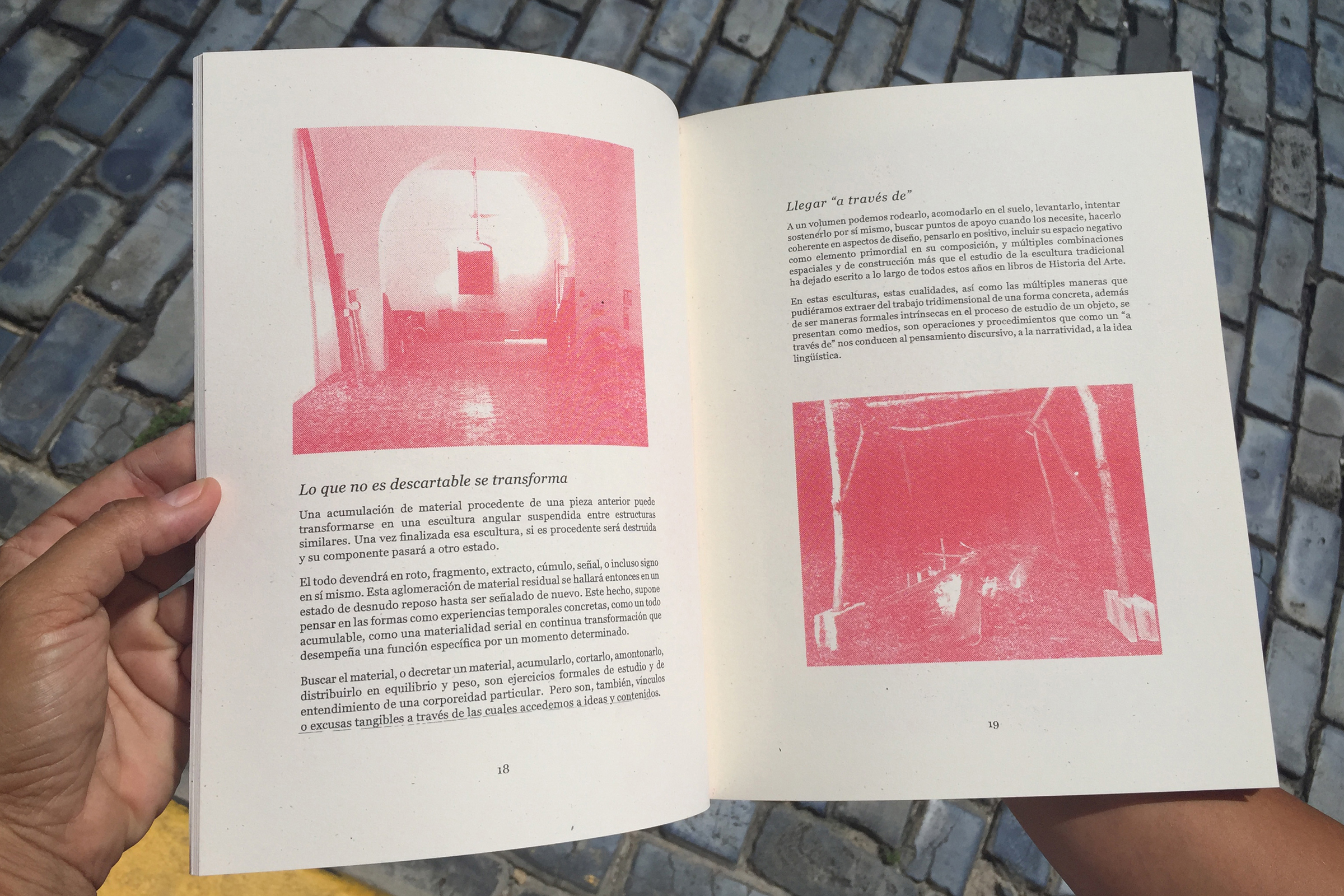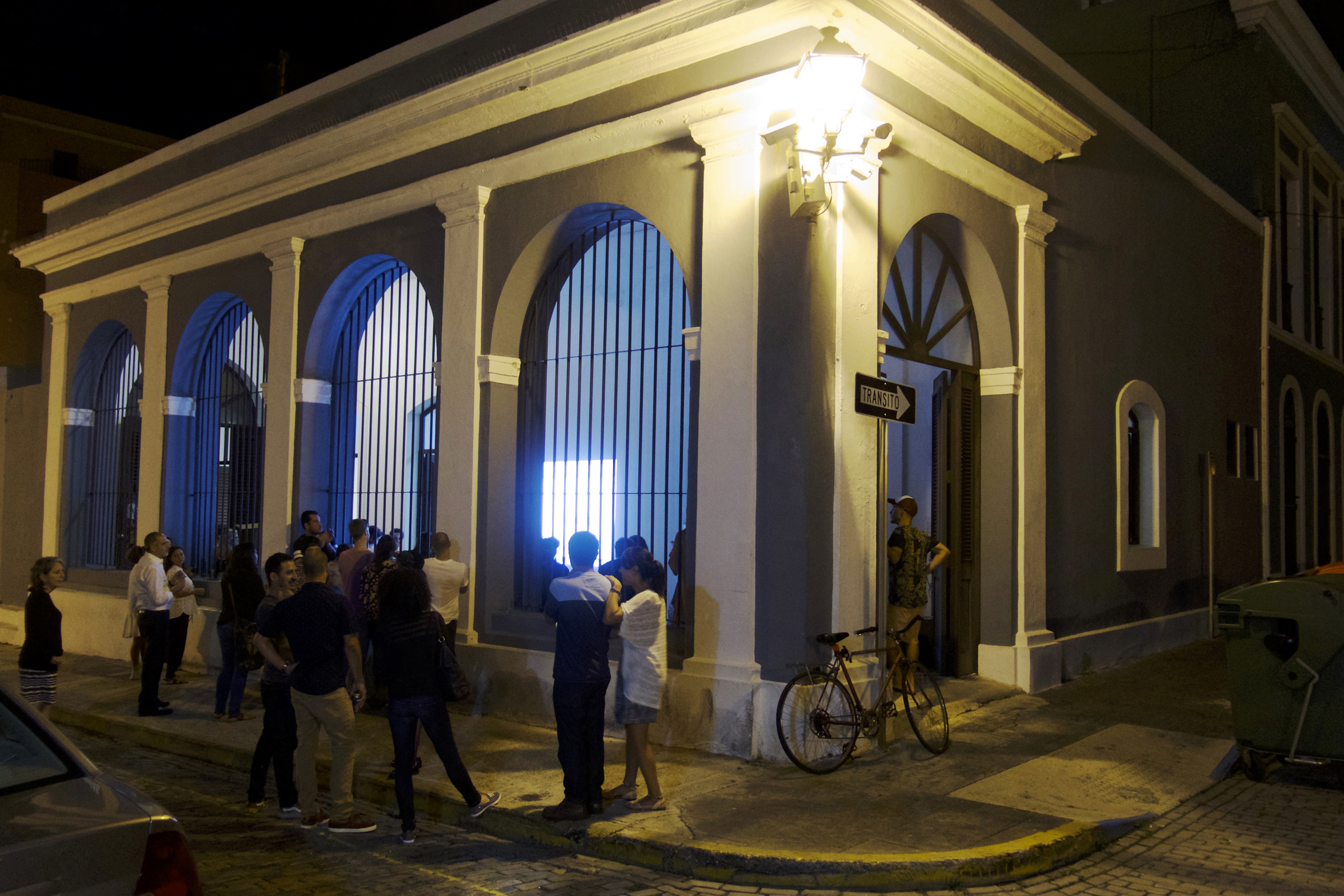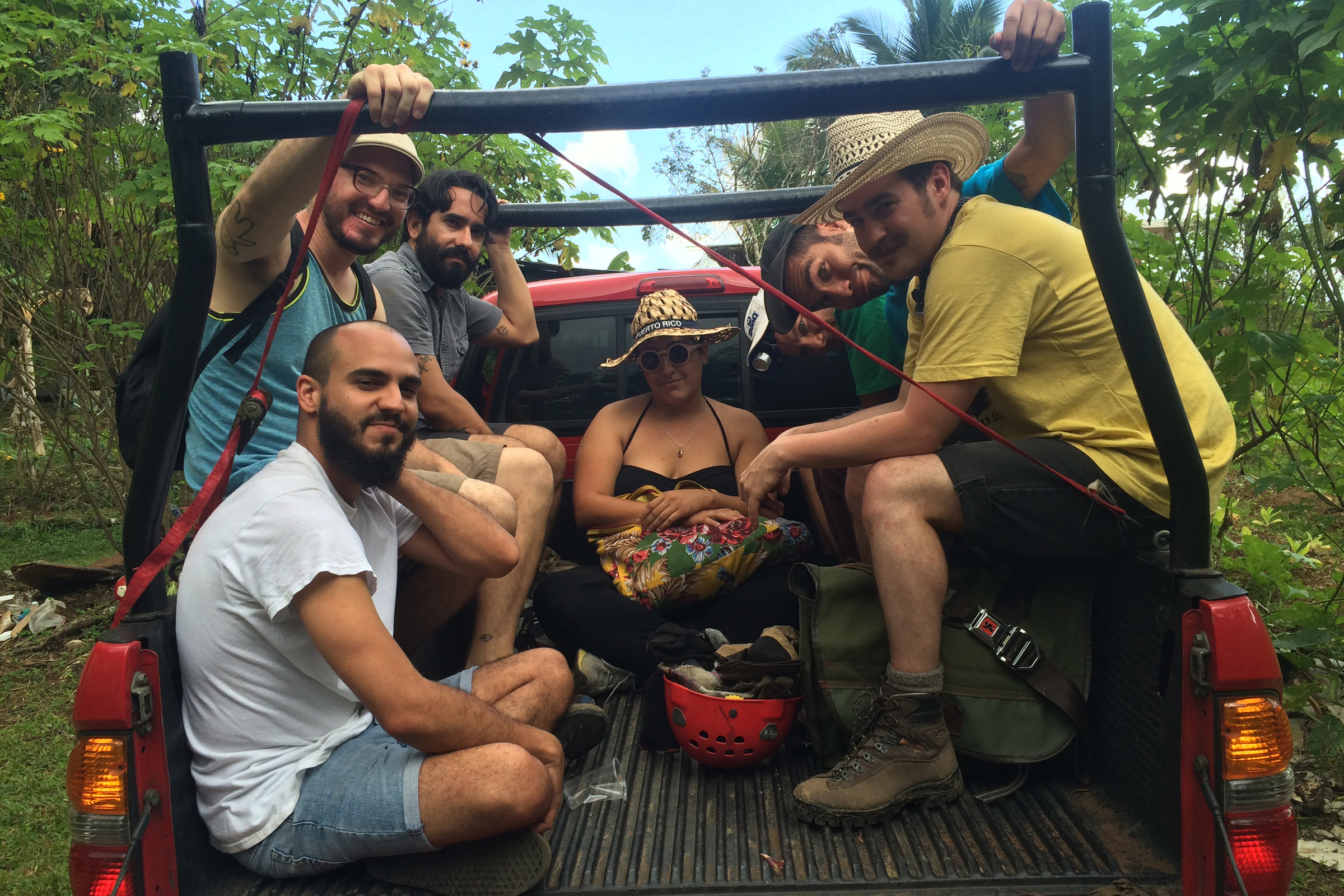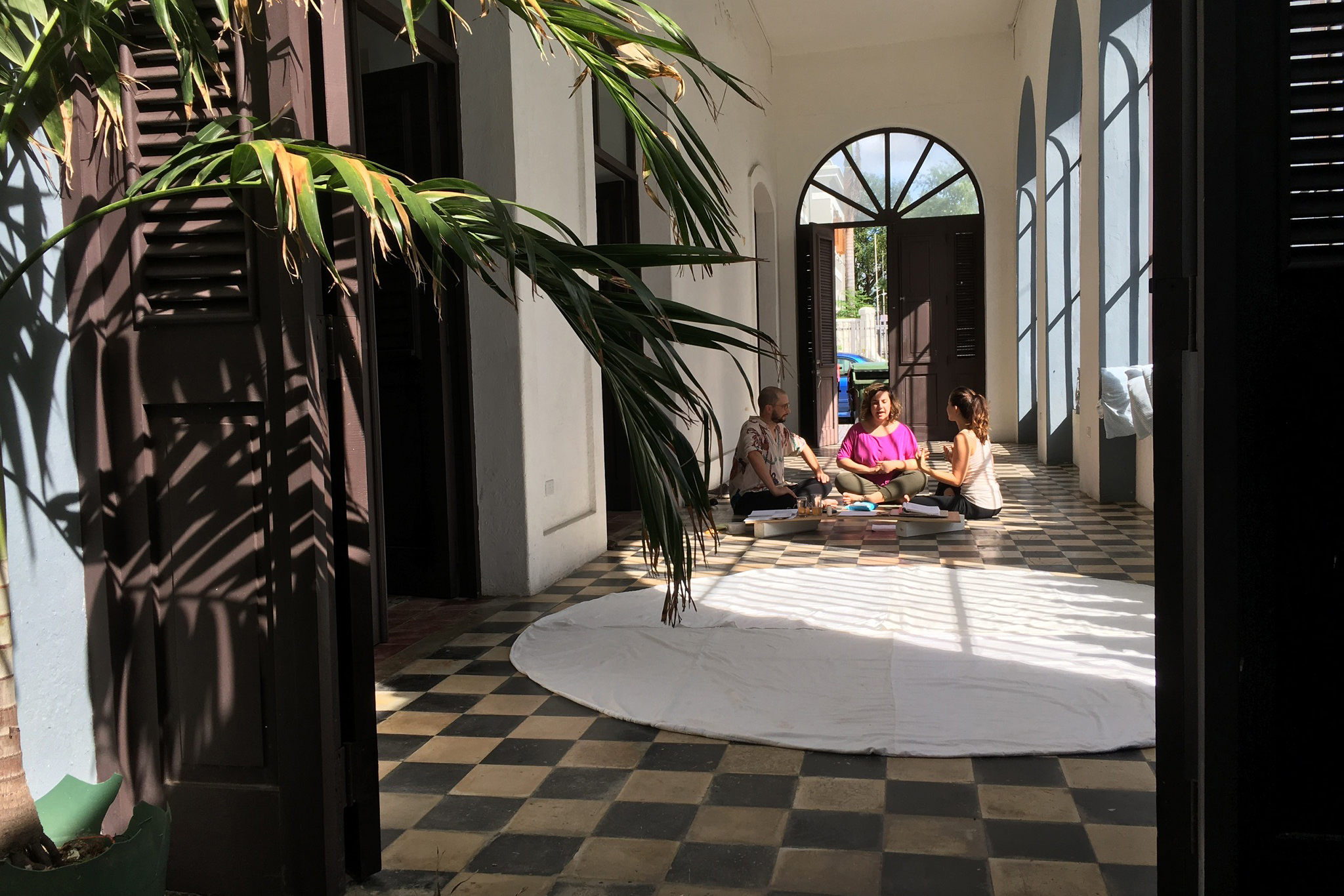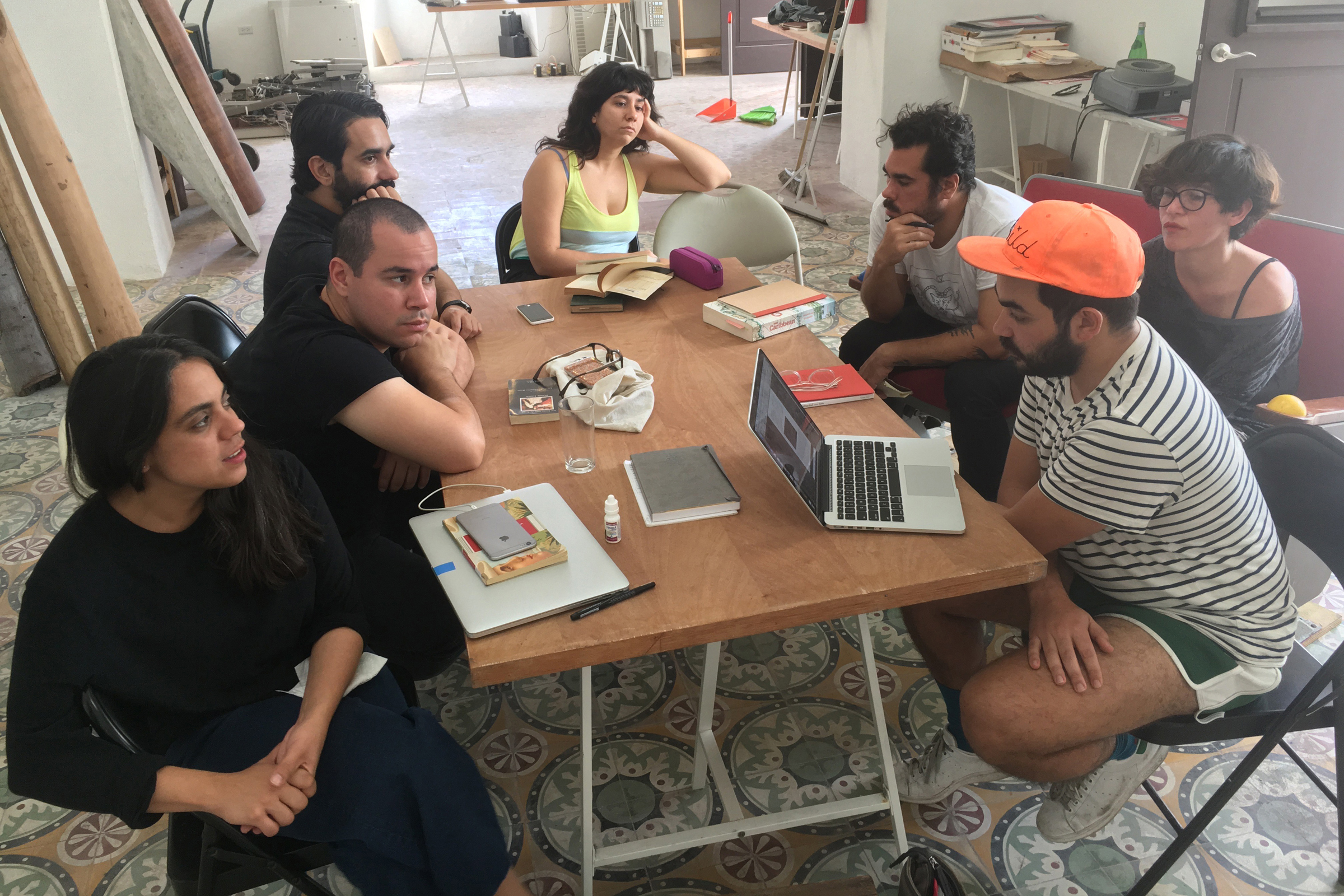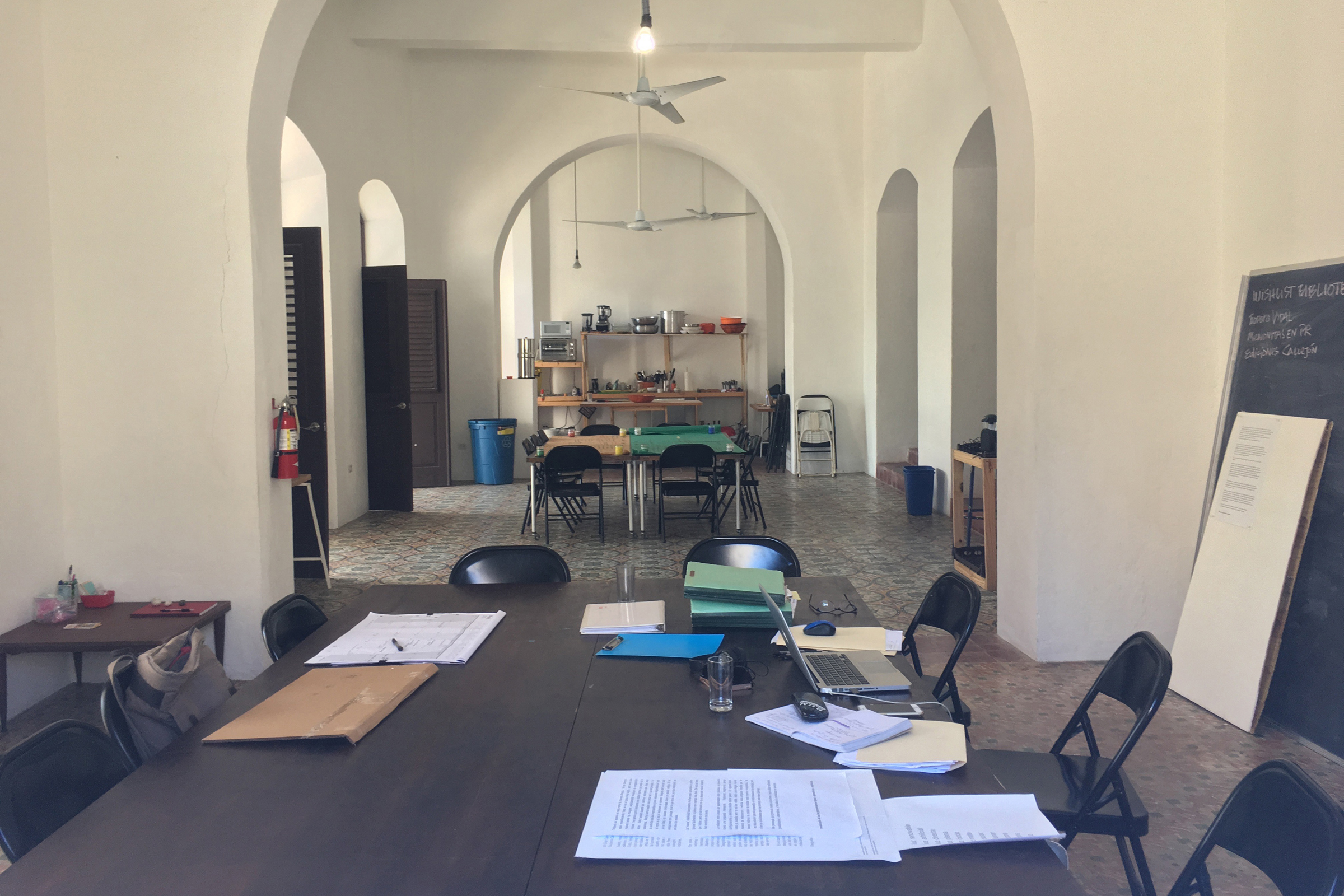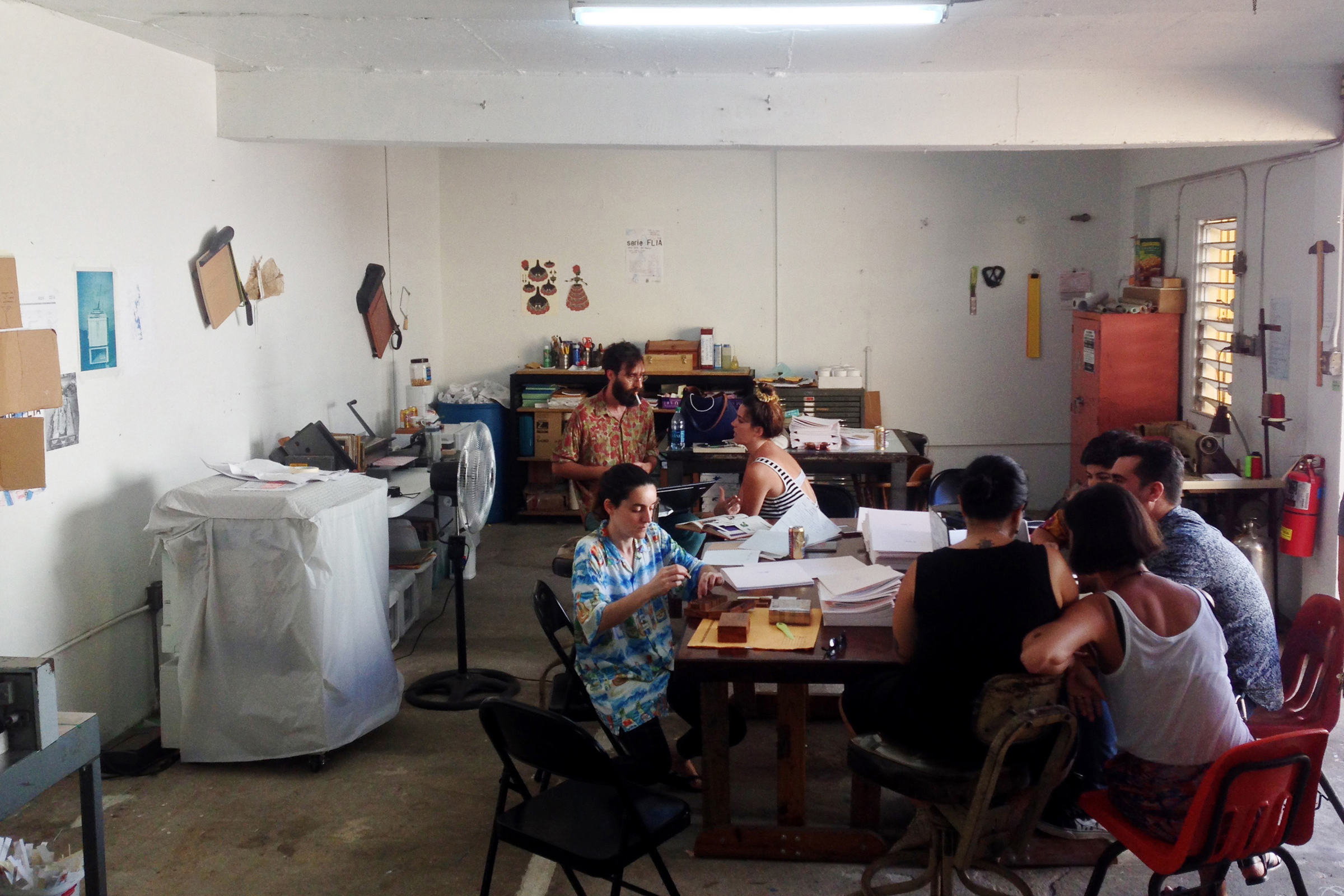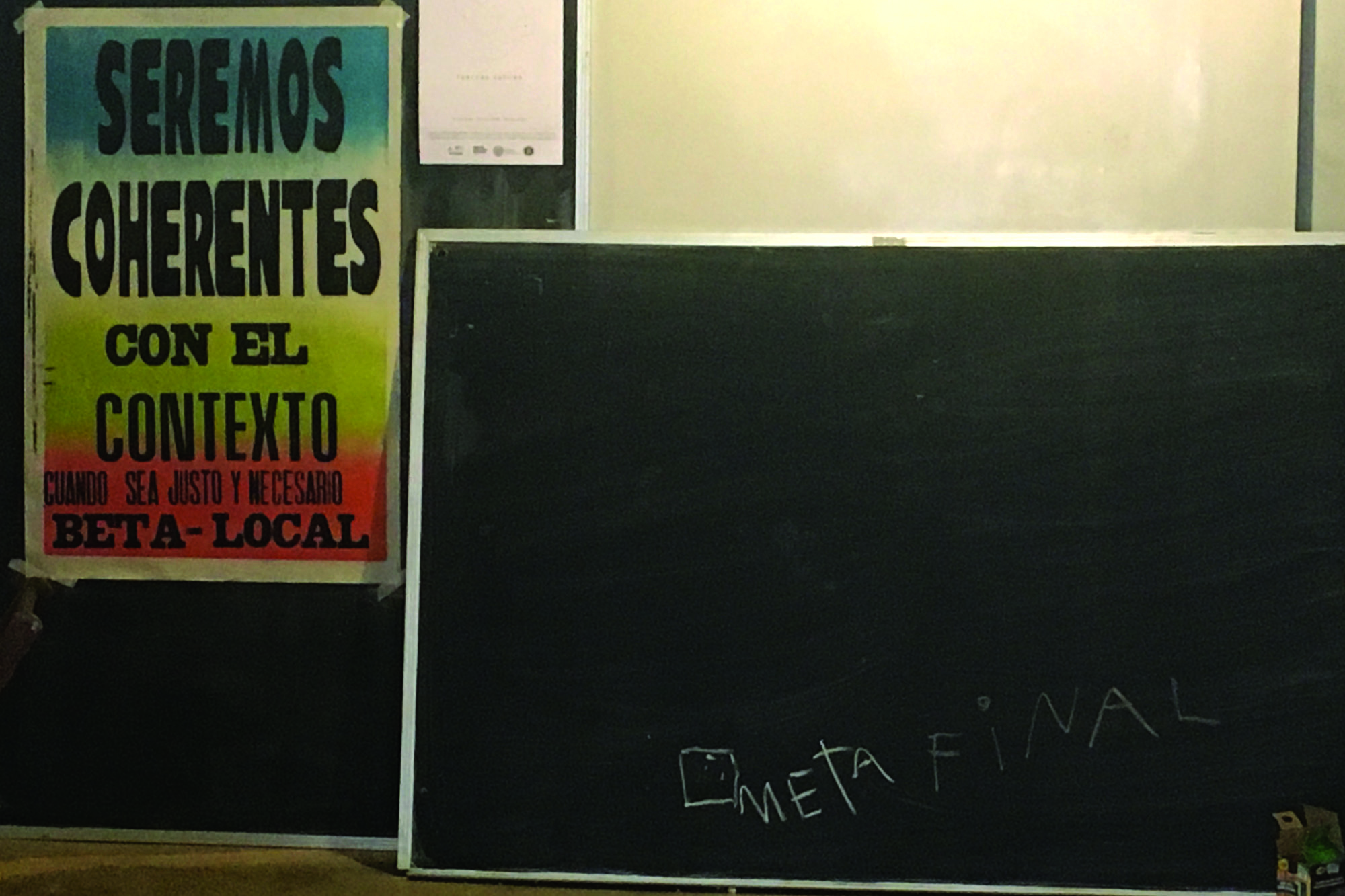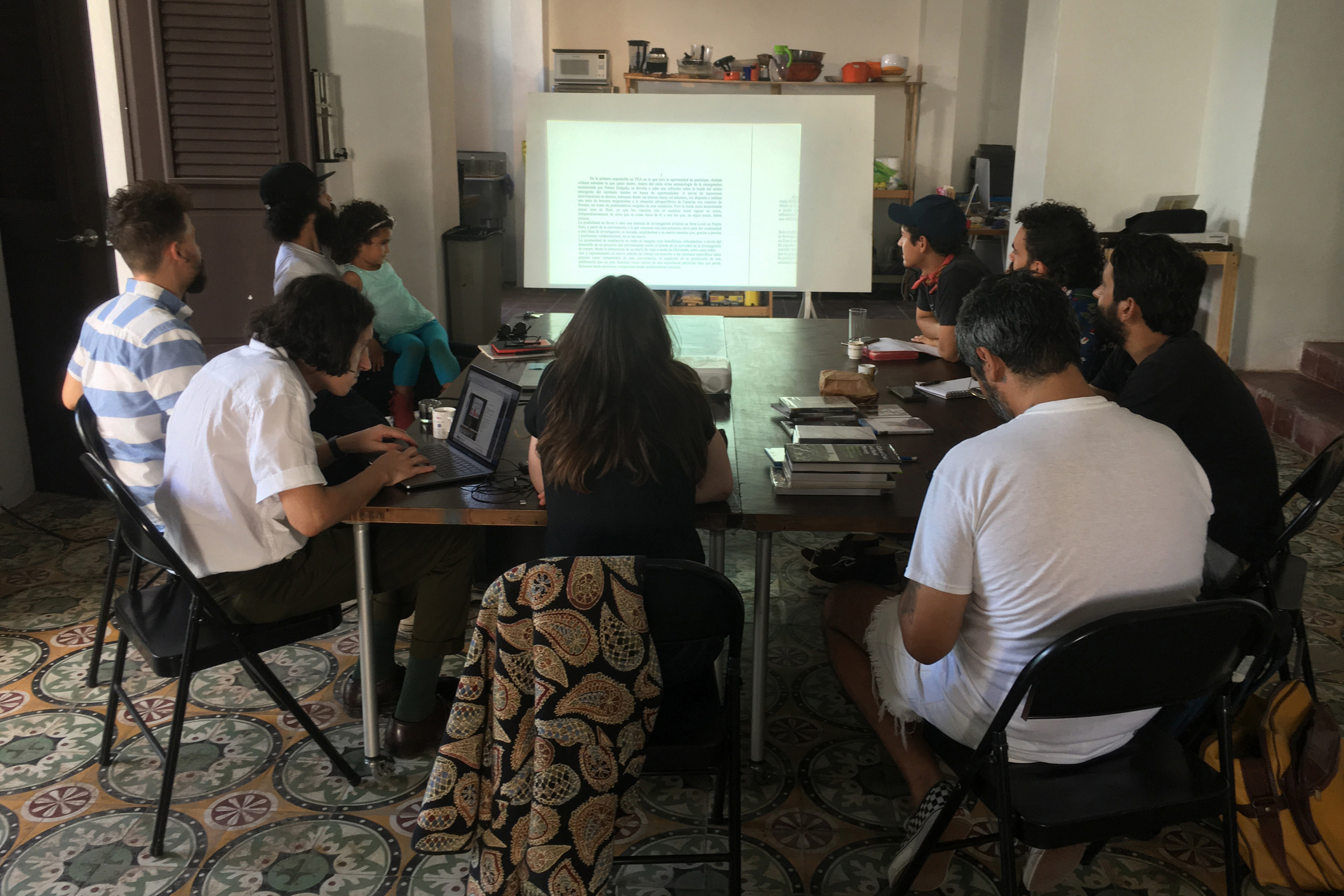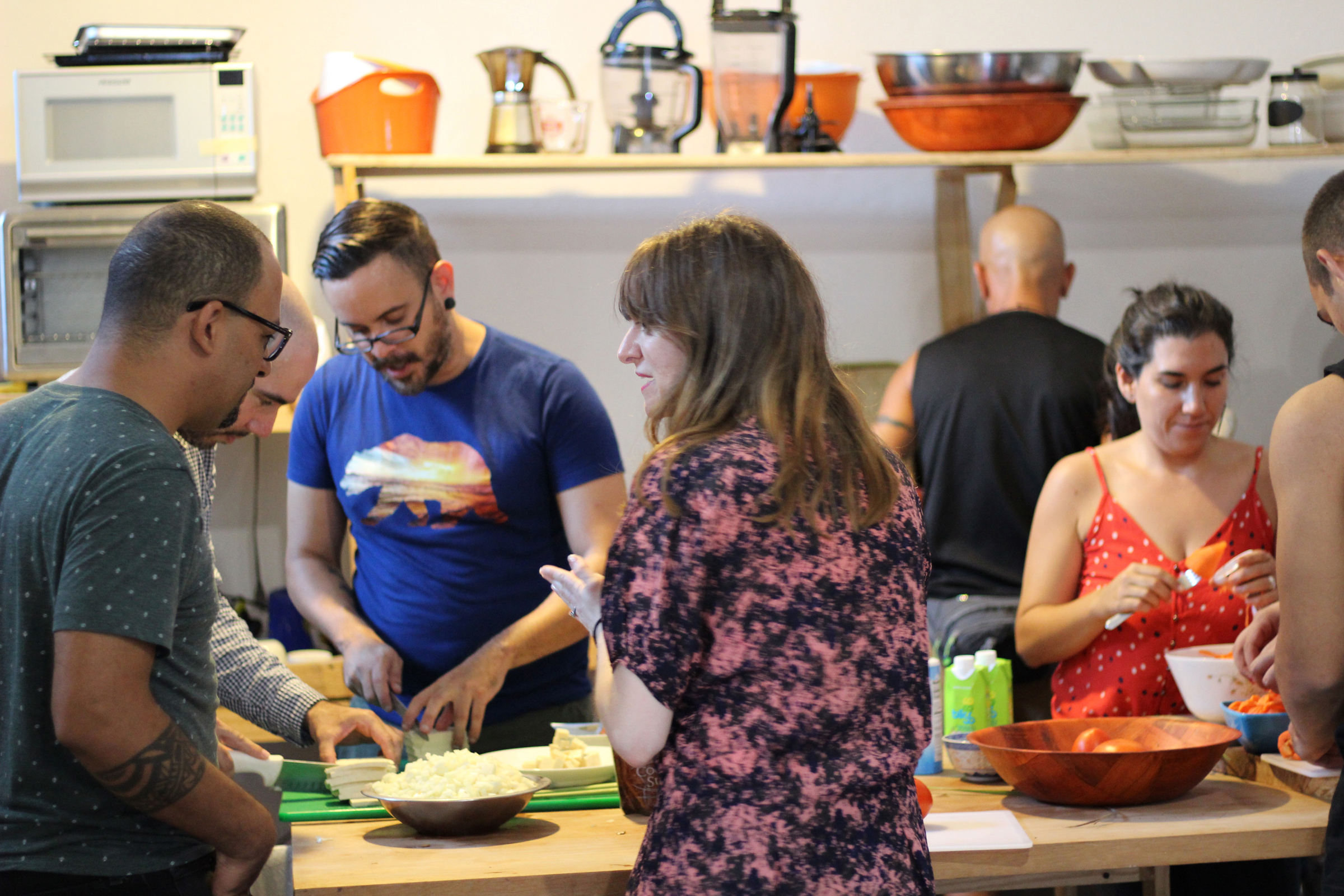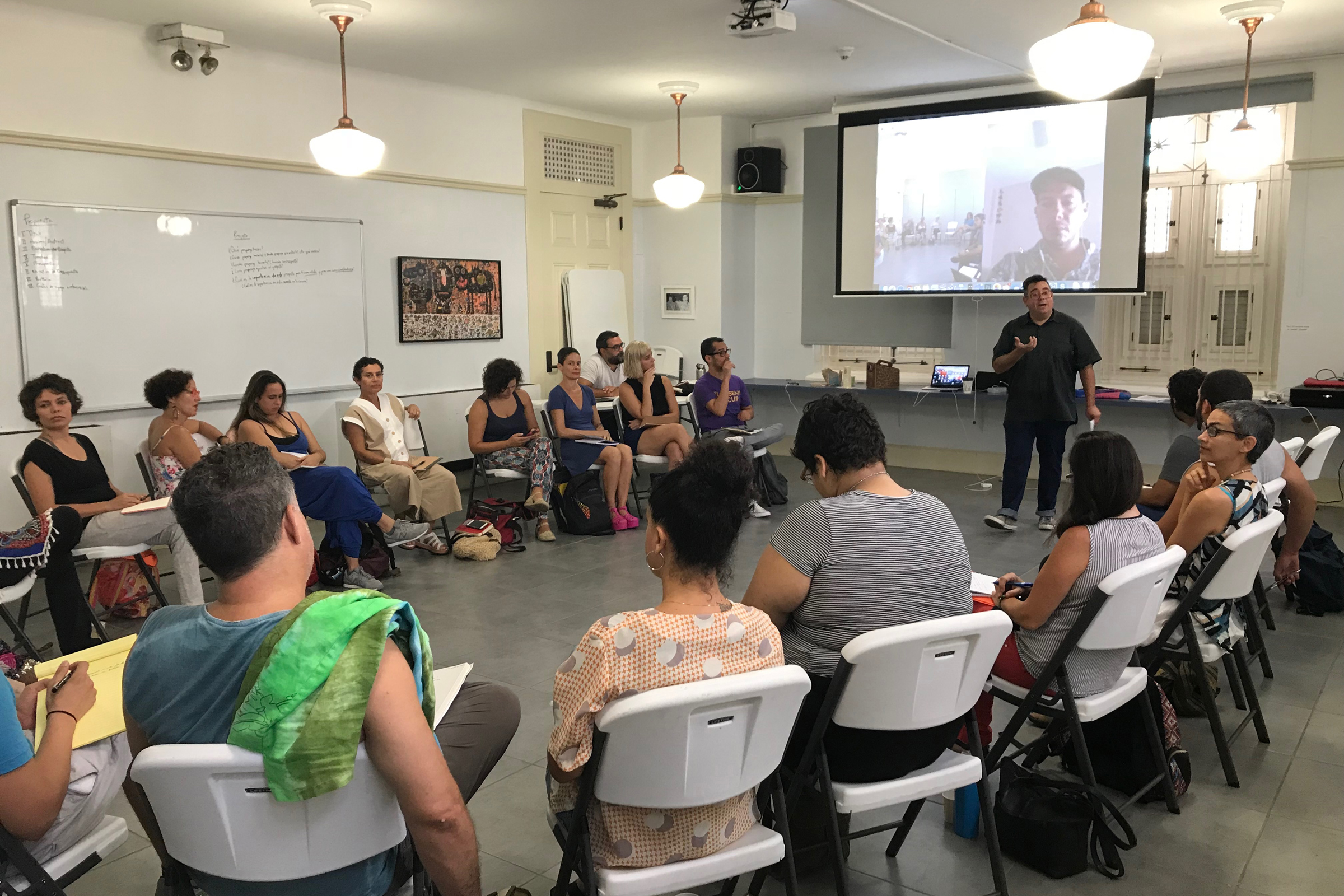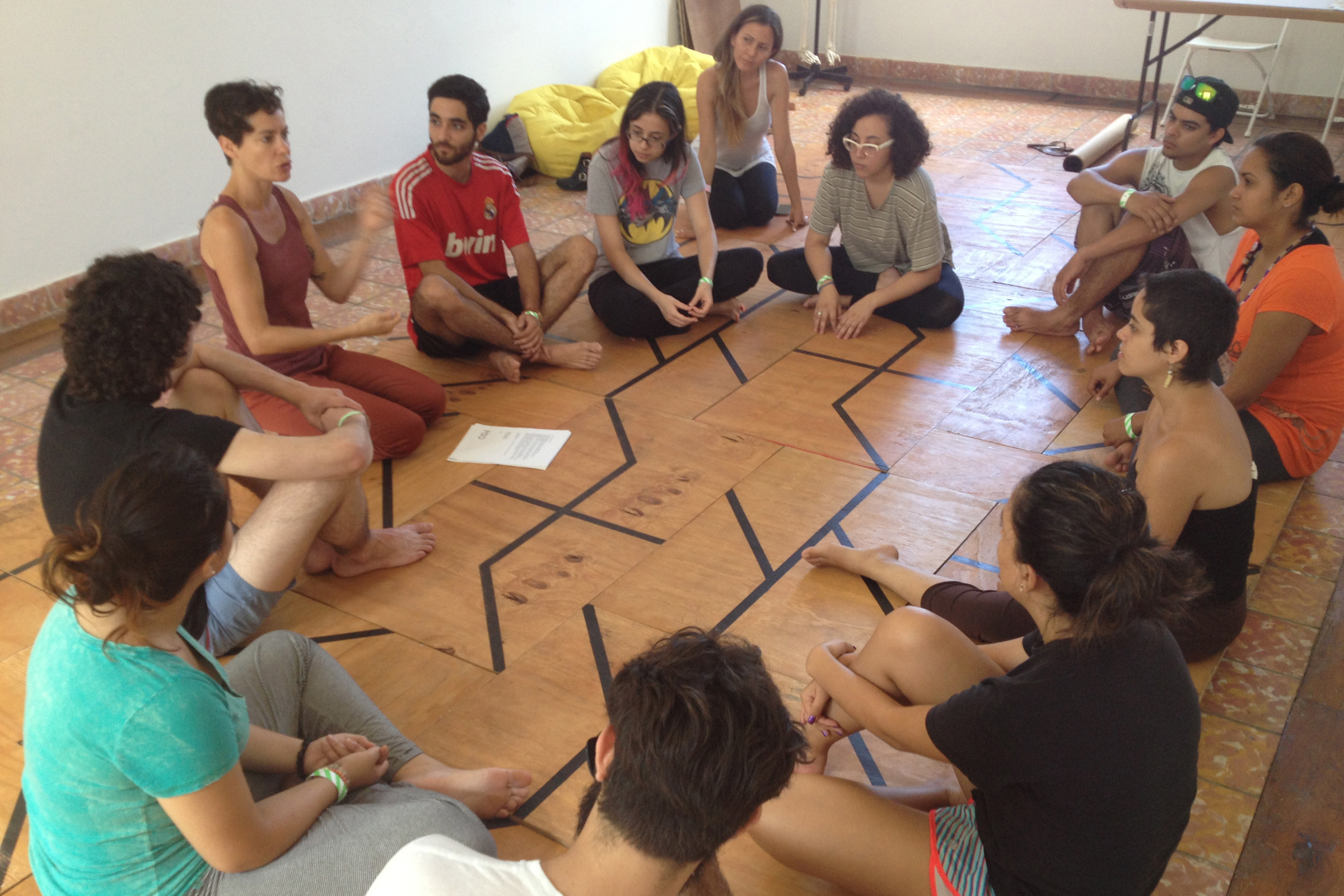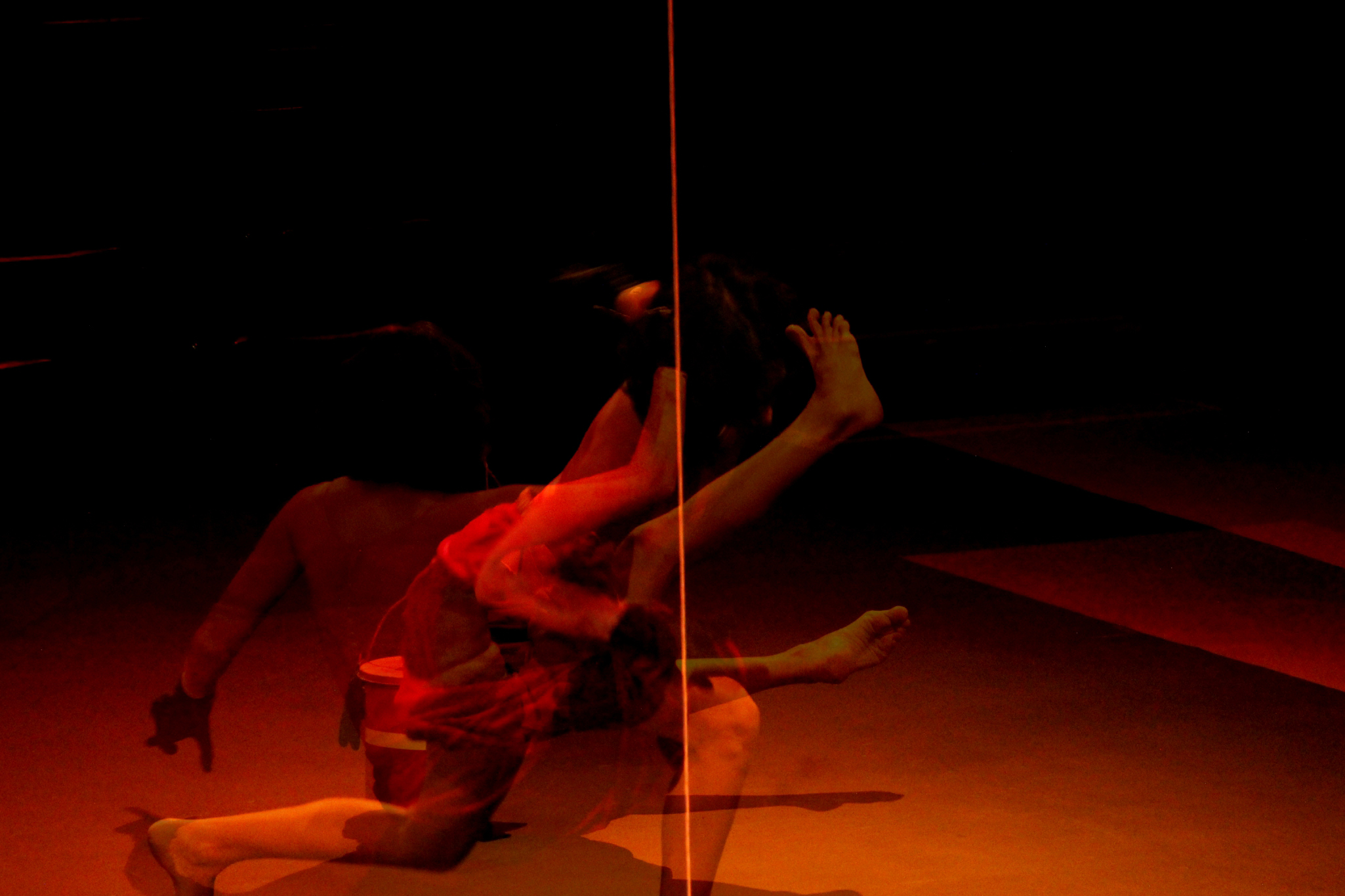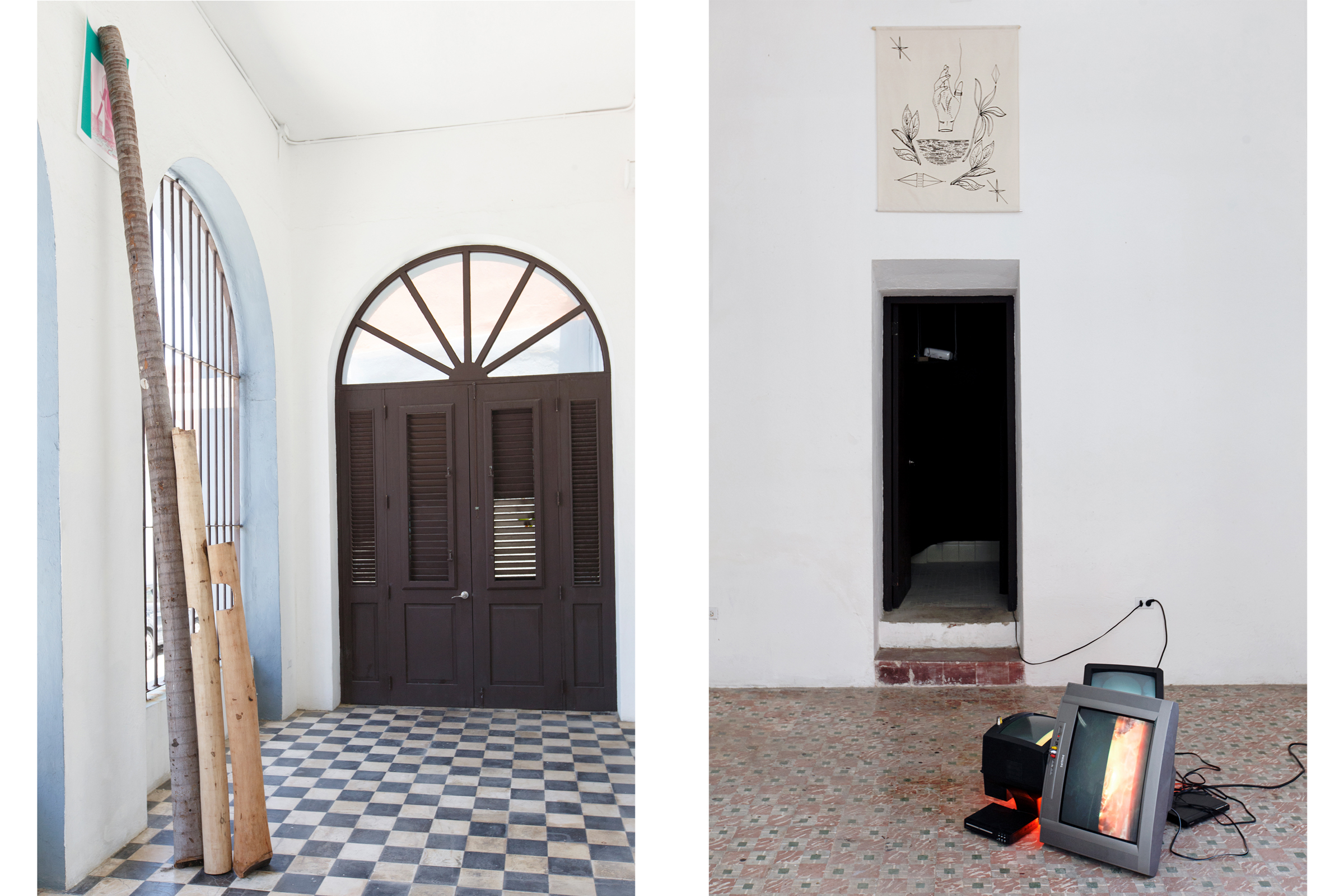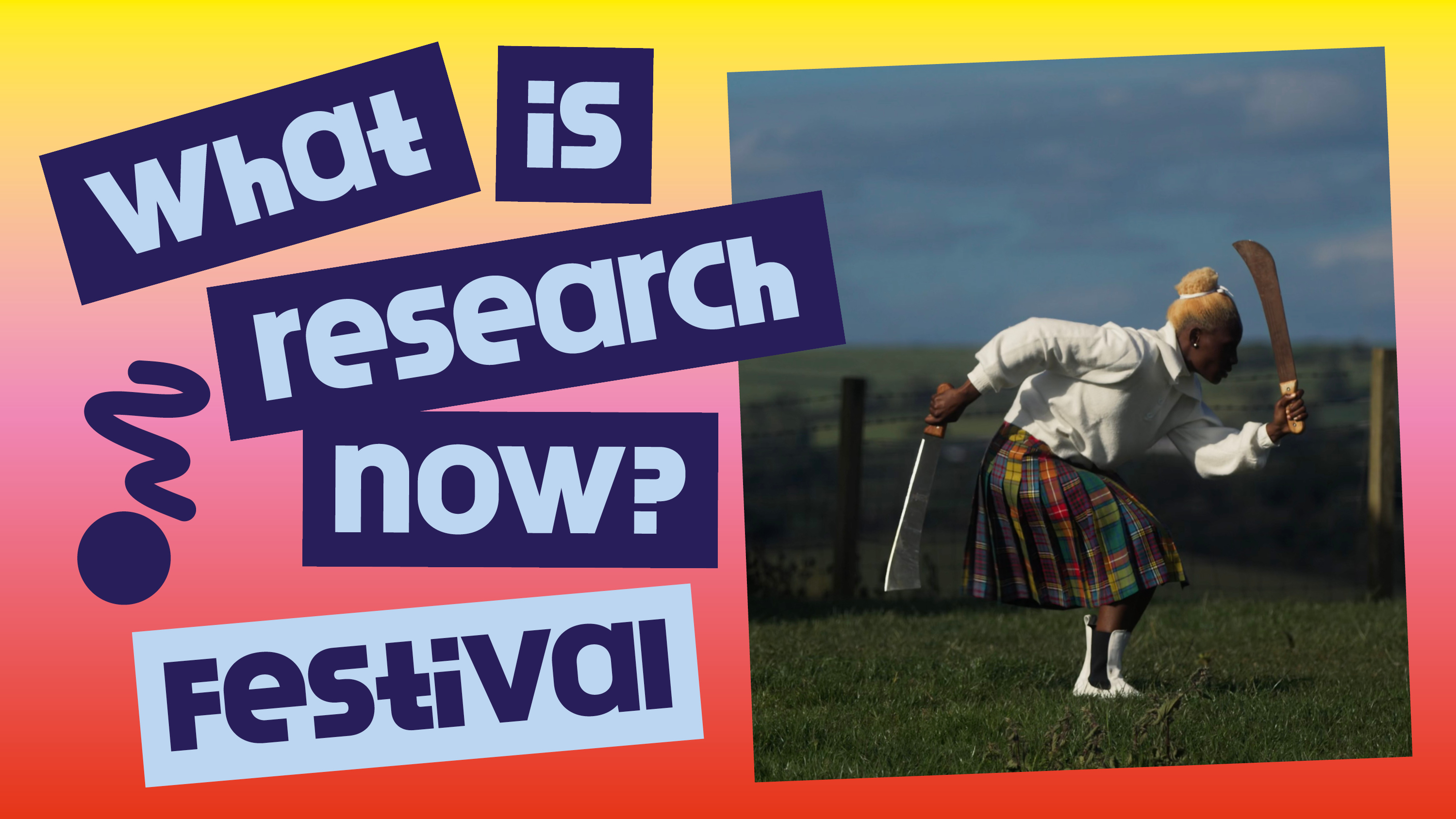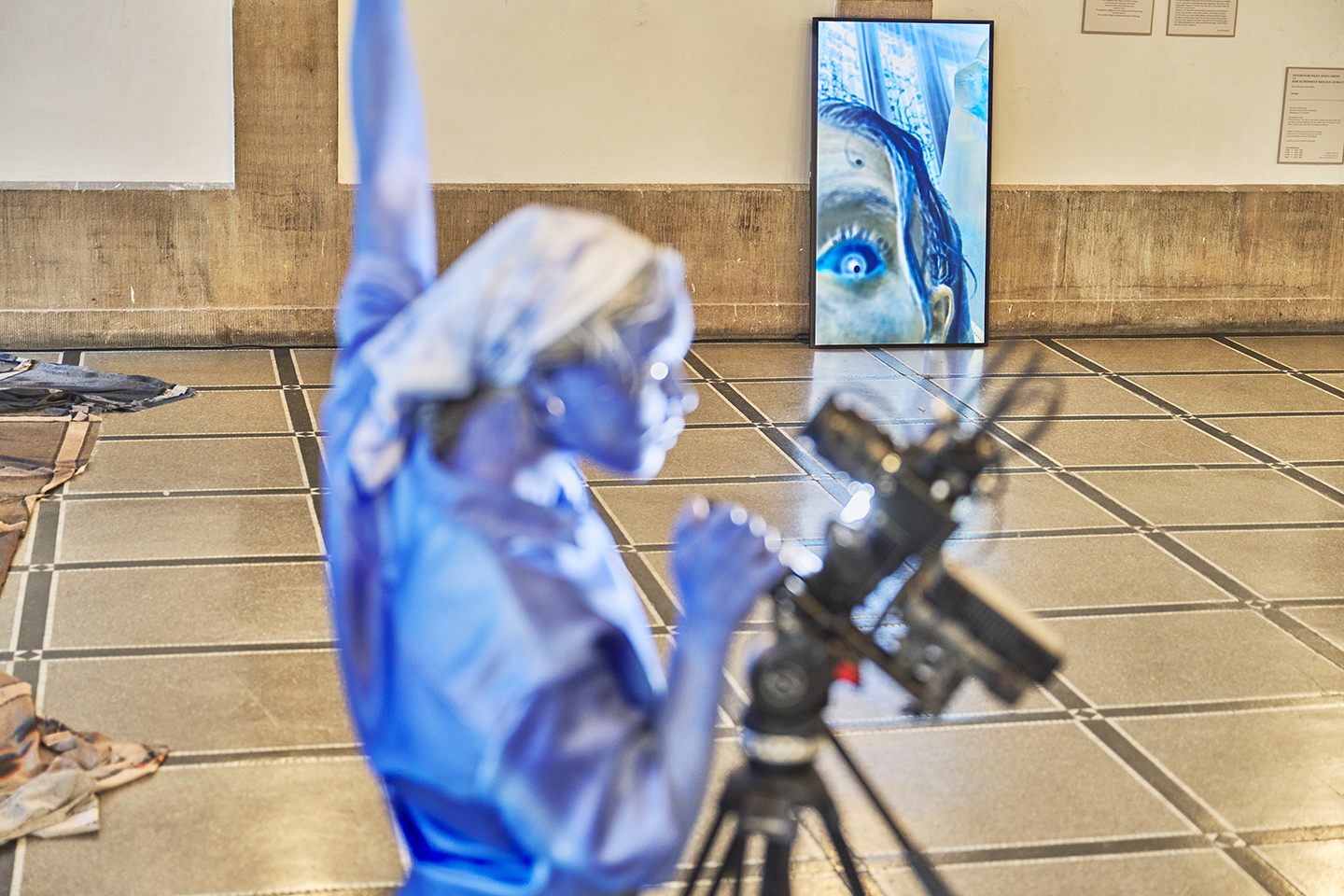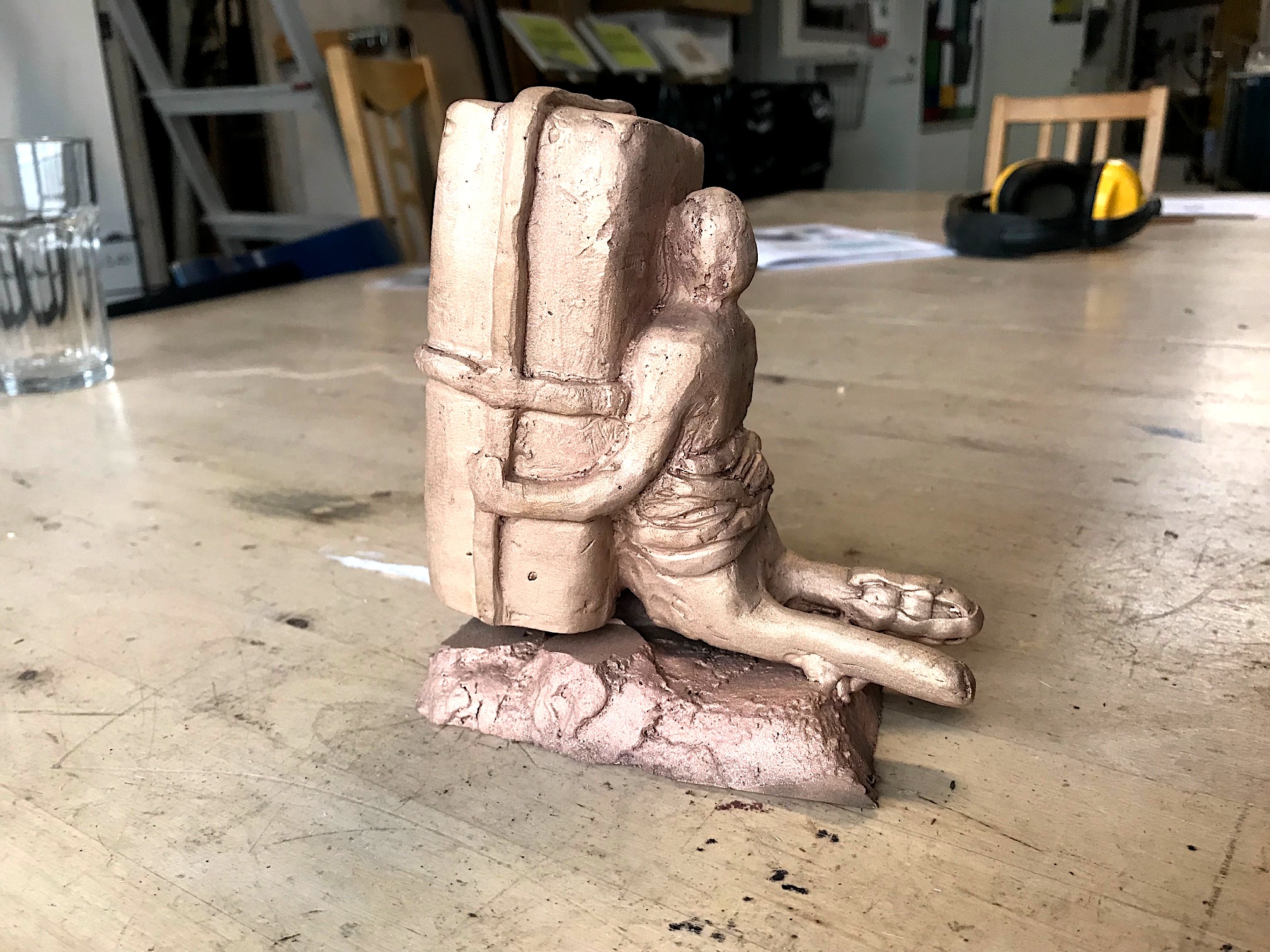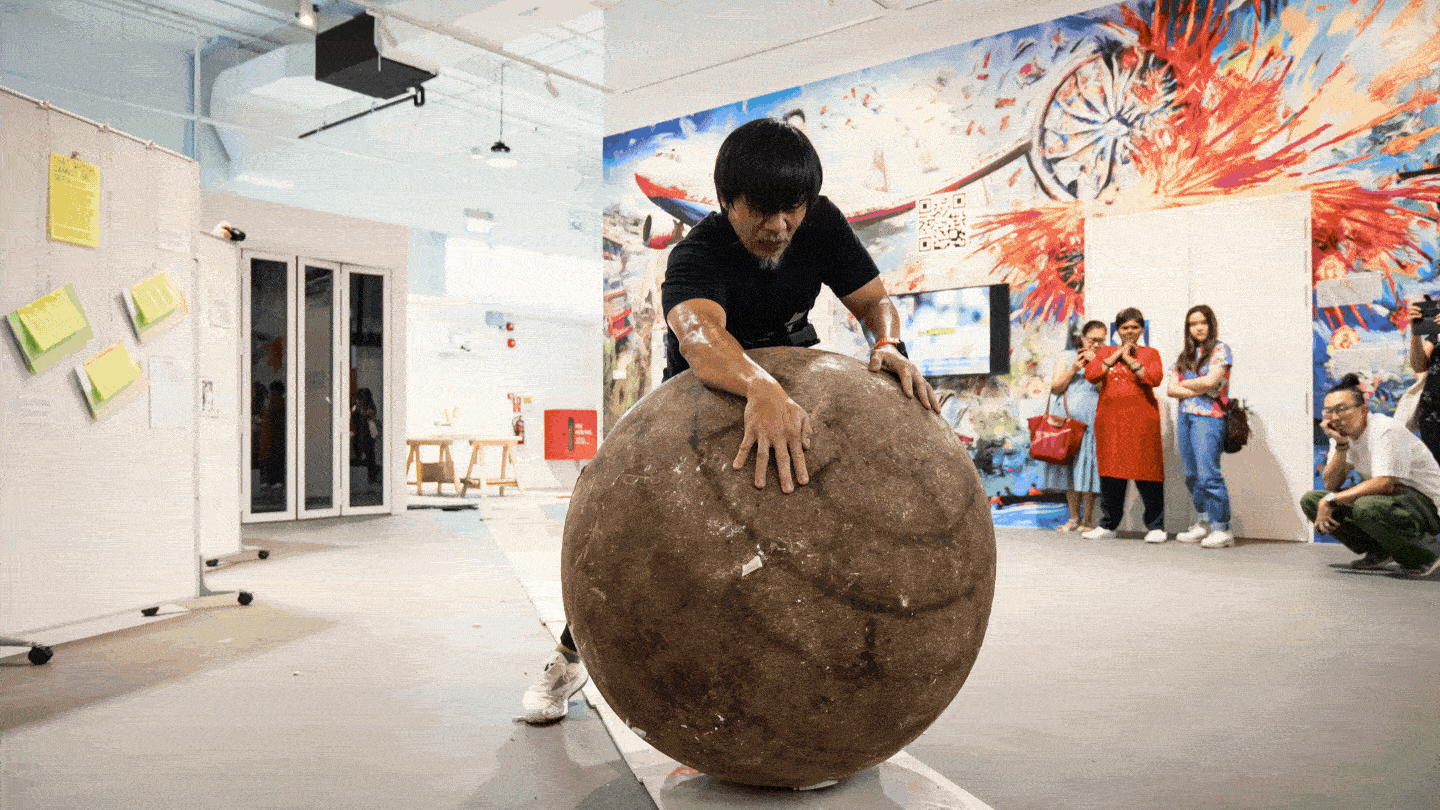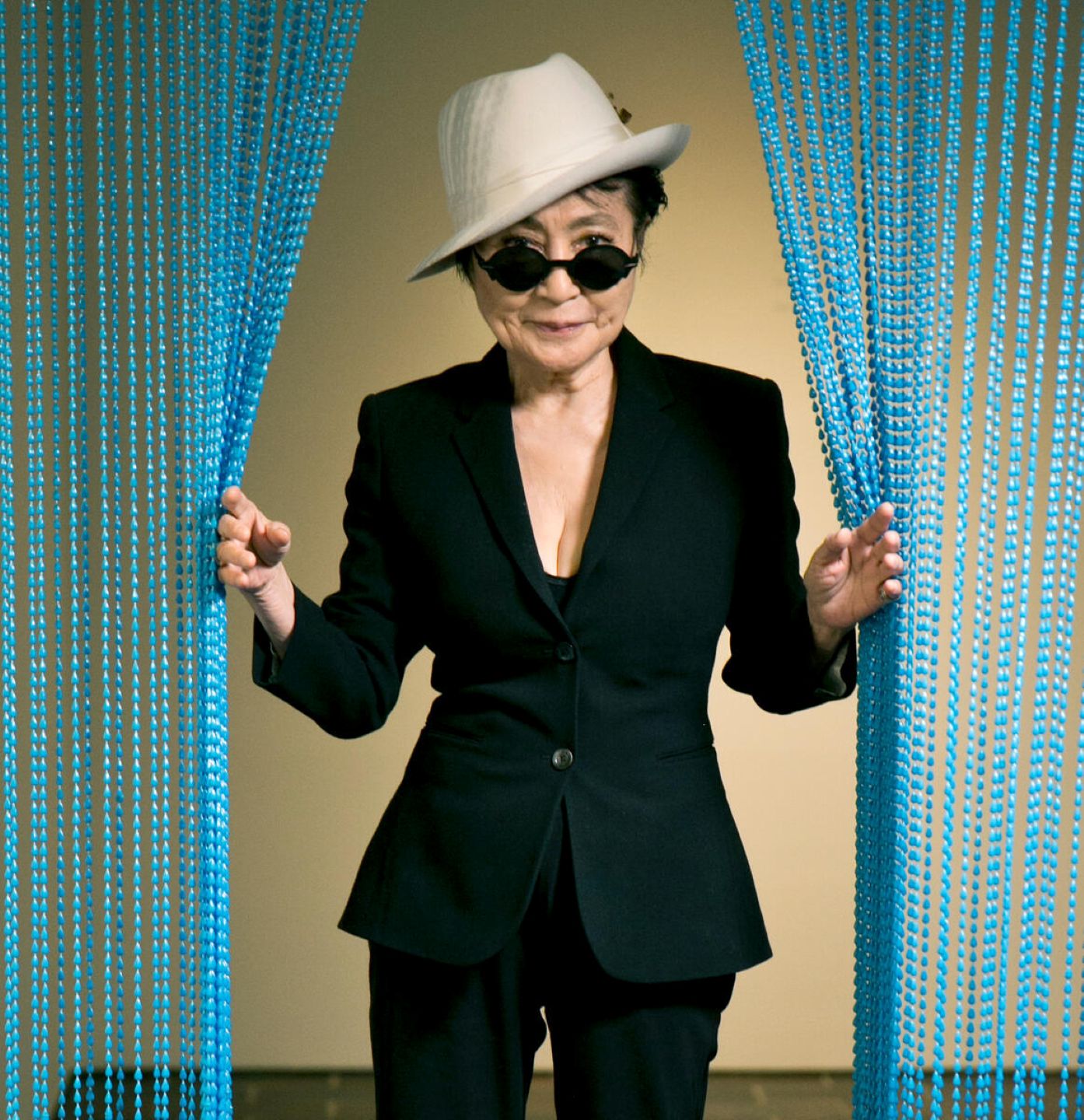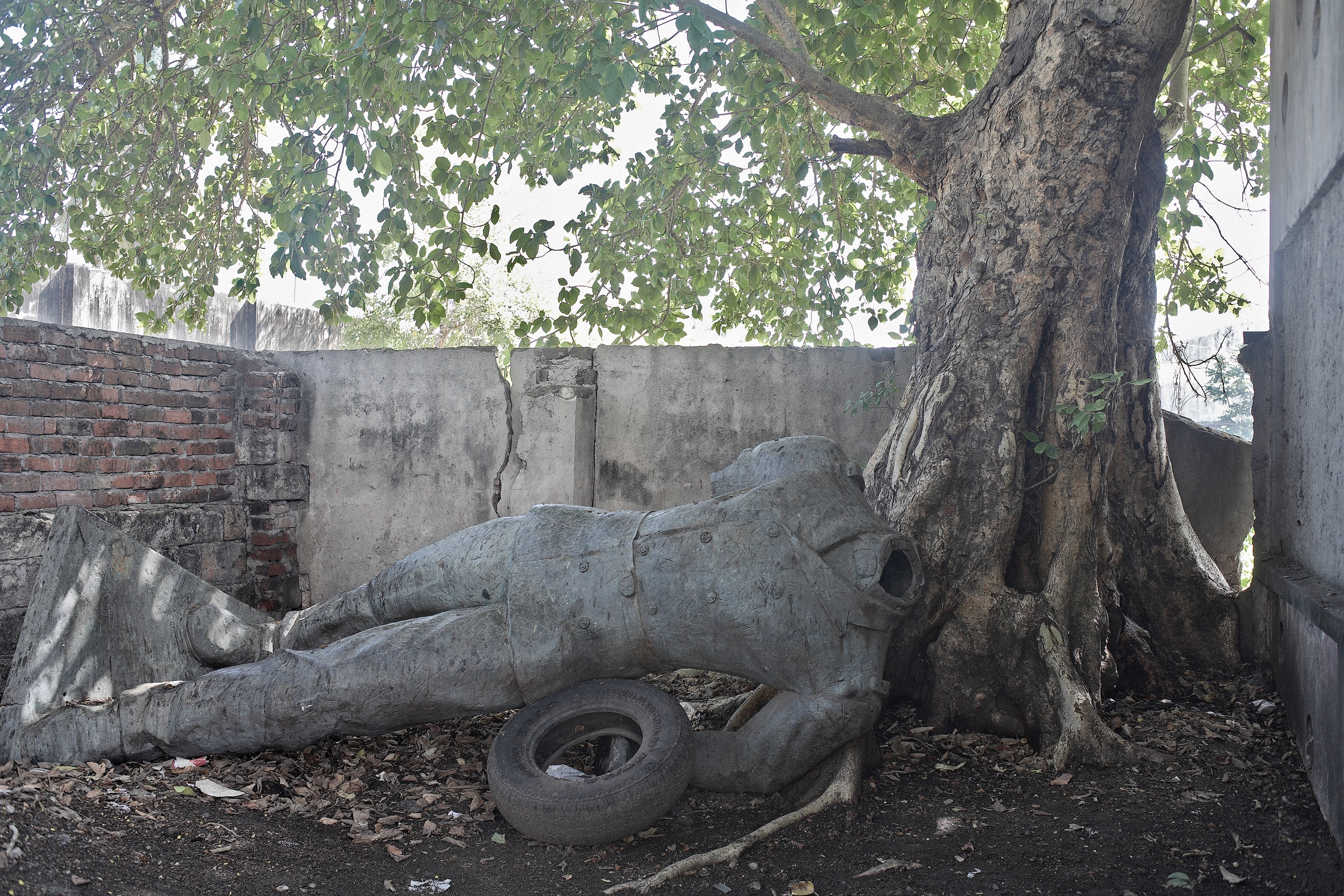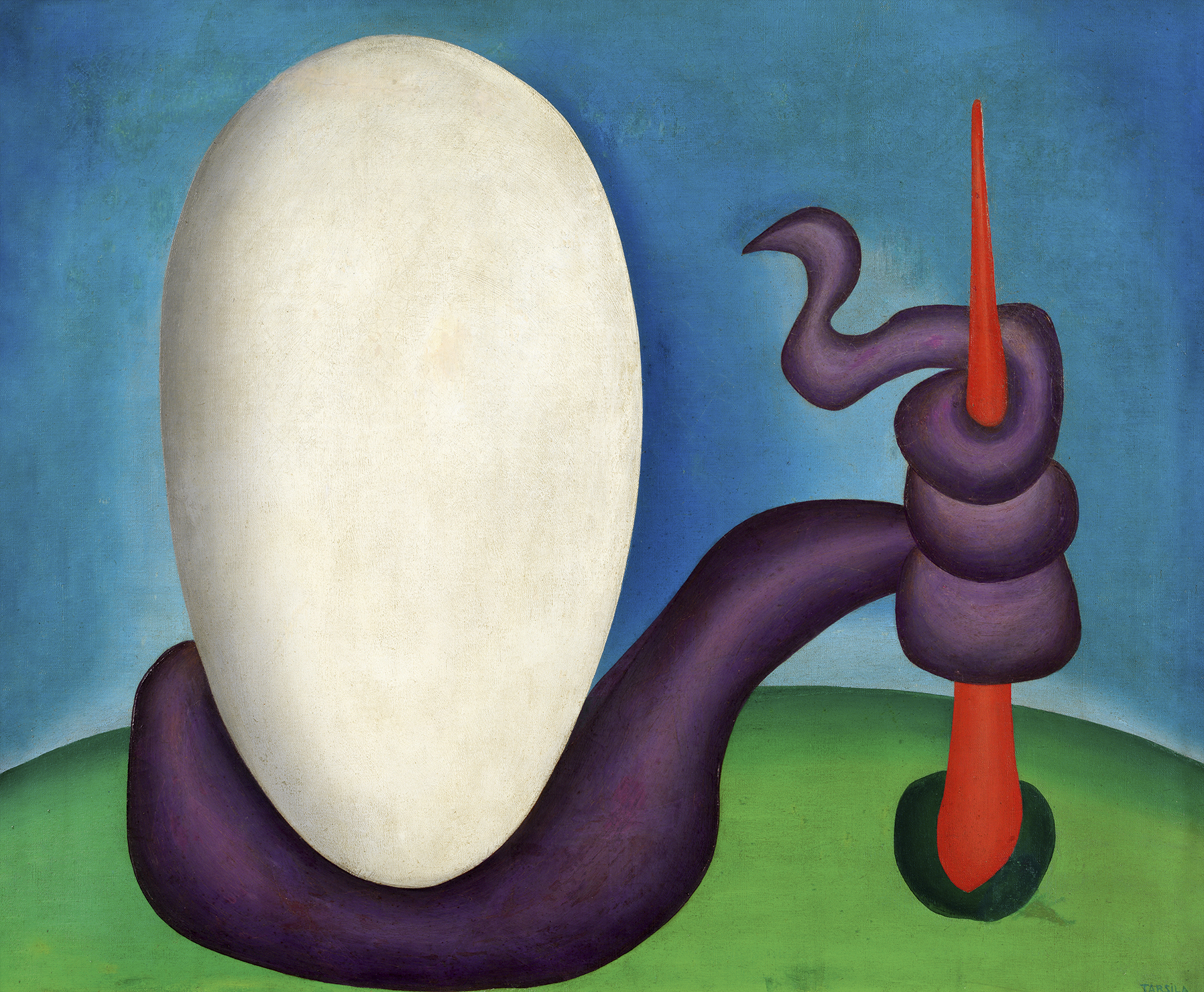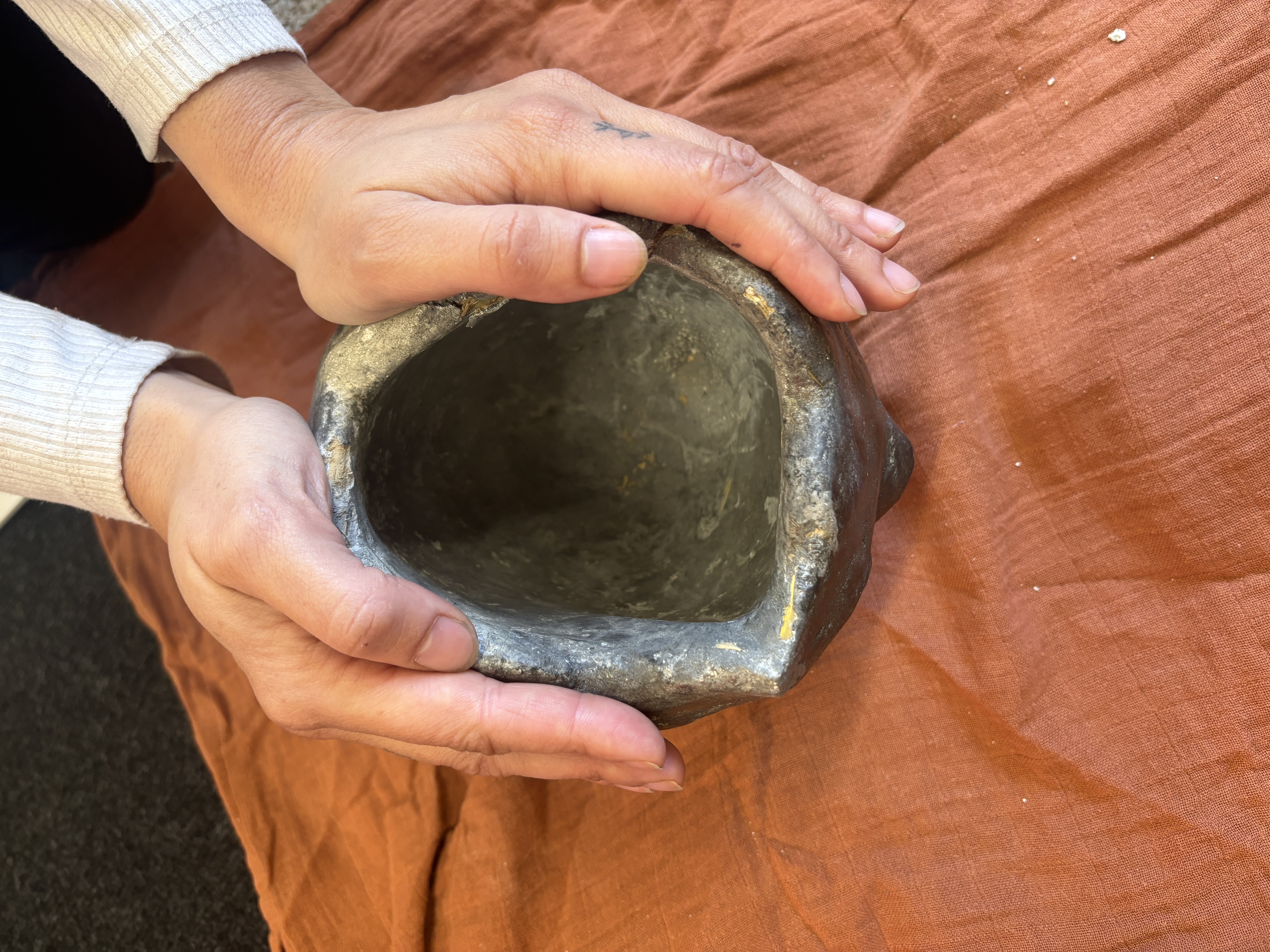Beta-Local’s La Práctica, the most inventive of Puerto Rico’s art education programs, has developed through variations and internal revisions since its founding in 2009 in San Juan by artists Beatriz Santiago Muñoz and José "Tony" Cruz and curator Michy Marxuach. Its first groups of fellows established an experimental, elastic pedagogical structure at a particularly vulnerable moment for Puerto Rico, with the beginning of the global financial collapse, the third year of a local recession, and the implementation of austerity measures that crippled Puerto Rico’s economy and triggered island-wide student strikes. Under these conditions, it was difficult to imagine a dignified cultural life on the island, but Beta-Local’s daring approach to cultural production, ability to mutate, and collaborative leadership have become hallmarks of the organization in the nine years since. This past August, as the one-year anniversary of Hurricane Maria approached, the Puerto Rican Arts Initiative, which is partly inspired by La Práctica and other local projects, was launched in partnership with Northwestern University. Though different in many ways, both programs seek to provide resources and intellectual stimulation to artists and other cultural producers eager to continue creating in and thinking from Puerto Rico.
Beta-Local’s precise structure is hard to define. “When Michy, Tony, and I were thinking about the project, we really did not have concrete forms—I remember ‘we want to do things,’ ‘we want to gather people’ as general purposes,” said cofounder Santiago Muñoz. “The idea was that we were all going to learn from everyone and that the processes of production and thought would be opened so we could all participate in that knowledge.” Current codirectors and artists Sofía Gallisá Muriente, Pablo Guardiola, and Michael Linares described Beta-Local as “acephalous,” without a head. Renewal is embedded in its institutional DNA by way of rotating codirectorships meant to encourage change within the organization every few years. La Práctica, a nine-month program running from September to May that supports five to eight Spanish-speaking fellows working in diverse fields, is Beta-Local’s education program. “The model of codirection and the process of collaboration that we have with participants—understanding ourselves as part of the community too—seek to annul the hierarchy of school,” said Linares. It does not privilege outcomes or schedules and does not charge tuition (but is not exactly free). The Beta-Local team raises funds every year to cover operational costs, access to resources, and fellows’ production budgets, in addition to directing La Iván Illich, a series of public programs, and The Harbor, a residency for artists and researchers.
In a 2010 interview for the New Museum’s “Museum as Hub” platform, Santiago Muñoz detailed how Beta-Local grew “out of our interest in rethinking aesthetic thought and artistic practice from our local context. We viewed the lack of local institutional support structures, such as contemporary galleries, museums, and art schools—along with the crisis in traditional modes of production and art economies—as an opportunity to develop alternative support structures for art and vernacular pedagogies.”[footnote Ruba Katrib, “Museum as Hub: Interview with Beta-Local,” Six Degrees :: New Museum. →] La Práctica was positioned to de-emphasize the moment of exhibition as the main contact with the public and reveal the process behind artistic practices, enriching it in turn. To quote Beta-Local’s own description, it is “an interdisciplinary program for cultural research and production” that is both “rigorous and generous” and requires participants to think from “Puerto Rico, the Tropics, the Caribbean, and this time.” Fellows are primarily Puerto Rican residents, plus two to four international participants each year; the duration of their participation is entirely dependent on the terms of their visa, a bureaucratic fact of Puerto Rico’s continued status as a United States colony. In addition to participating in La Práctica’s discussions and field trips, fellows are expected to propose and create programming for Beta-Local’s other initiatives, whether by inviting colleagues to present work in process at a “Pin-Up” session or at workshops for the public through La Iván Illich, or by proposing lectures, seminars, and study groups. The weekly meetings that form the core of La Práctica provide a common structure to share resources, reinforce practices, and facilitate researching and problematizing the artistic process.
Much of the program’s ethos stems from the work of Iván Illich, a Croatian-Austrian philosopher and Roman Catholic priest who served as vice rector of the Catholic University of Puerto Rico and is known for his critique of modernization and institutions. In the early 1970s, Illich applied the concepts of deinstitutionalization and sociability to education, but unlike critics who pointed to inequality as the primary problem of pedagogy—one that could be solved by practicing emancipatory education and allocating more resources to the poorest—Illich believed that the problem was the school itself. In Deschooling Society, he wrote, “The current search for new institutional funnels must be reversed toward the search for their institutional antipode: educational frames that increase so that each one transforms each moment of his life in a moment of learning, sharing, and being interested.”[footnote Iván Illich, Deschooling Society (London: Marion Boyars Publishers, 1971).] If conviviality—autonomous and creative discourse among people in relation to their environment—fell below a certain threshold, then there would be no way for industrial productivity to satisfy people’s social needs. This characteristic, Illich wrote in Tools for Conviviality, is “the individual freedom realized in interdependence and, therefore, an intrinsic ethical value.” [footnote Iván Illich, Tools for Conviviality (London: Marion Boyars Publishers, 1973).] How these concepts permeate through Beta-Local are variously evident, from the very obvious homage in the naming of La Iván Illich to the horizontal structure of the organization and collaborative nature of its programming.
For Guardiola, some methodologies inherent to La Práctica involve looking for ways in which artists and other cultural producers can share the references and conceptual underpinnings of their particular kind of work as a way of questioning “how work is exhibited, how we write about cultural production, and how we can document a research process.” Writing is consistently emphasized in the program, and publications are intended to share and make visible the internal processes of the different creative groups and individuals. Material outcomes are secondary to participants’ immersion in the practices of their peers—other fellows, residents, or the codirectors. Still, the codirectors do organize professional group workshops whenever common needs are identified, most often around budgeting and project or artist-statement writing. According to Linares, who was a participant in the first session of the program, La Práctica was once more inclined toward the visual arts but purposefully broadened its perspective: “At the time, the program directly confronted a cultural crisis … Everyone was encouraged to develop an ambitious project that could not be developed without the help and connections that Beta-Local tried to provide. It was very focused on the production of a material project, whereas now I see it more focused on the production of thought.” Likewise, La Práctica has grown to welcome not only artists but myriad other cultural producers: architects, dancers, designers, researchers, writers, poets, and curators, among others. Fellows’ projects have not always fit comfortably under the label of “contemporary art,” such as a local organic food distributor (El Departamento de la Comida, Tara Rodríguez-Besosa, 2009–10), a printing press (La Impresora, Nicole Delgado, 2014–16), and a native wood salvaging project (MAOF, Diego de la Cruz Gaitán, 2013–15).
The context and concepts that define La Práctica are intimately intertwined in theory and practice. The 2013–14 session, for instance, focussed on Caribbean writers and texts to support the fellows’ individual projects and shared affinities. Curator Sofía Olascoaga presented her research on Iván Illich as part of her residency at The Harbor, and then invited all La Práctica 2013–14 fellows and co-directors to develop a workshop for her project “Between Utopia and Disenchantment” in Cuernavaca, Mexico. They collaboratively developed a workshop where people weaved baskets while reading a text aloud, usually from a Caribbean writer or one related to the labor movement in Puerto Rico and artisanal practice. In fellow Mónica Rodríguez’s experience, that year “the theories of Iván Illich on decolonization, pedagogical alternatives, and other forms of sharing knowledge were present in the way we were thinking and working in our individual and group projects.” Spanish artist Claudia Claremi’s experience during the 2014–15 session is representative of the collaborative nature of Beta-Local’s programs, which emphasize “the feeling of freedom and the possibility of not only doing a project—as in a residency—but also of being able to touch other platforms within Beta-Local, such as La Iván Illich, the ‘Pin-Up’ presentations, and The Harbor.” Claremi presented an idea of working around the subject of scarce and forgotten varieties of fruit, eventually producing a 16 mm film in a workshop with Kathryn Ramey (a resident artist with The Harbor), an open studio, and, after acquiring more funding, a publication. Virginia Colwell, an artist from the United States and Mexico, came to La Práctica in 2014–15 to research the Fuerzas Armadas de Liberación Nacional (Armed Forces of National Liberation) and the socialist Puerto Rican independence actions of the 1970s and 1980s. In her experience, the codirectors at the time—Cruz, Guardiola, and Gallisá Muriente—provided perspective on the daily struggles of contemporary colonialism and pushed her to think about radicalism and activism in unexpected ways. Ad Minoliti, an Argentine artist who visited for six months as part of La Práctica during the 2015–16 session, noted the radical change her project on architecture underwent through the effective, symbiotic relationship between the program and Delgado’s La Impresora.
La Práctica no longer requires prospective fellows to outline a specific project in their applications. “We were judging the applications on the basis of proposals, but when we actually got the group together months later and started meeting, projects changed or were abandoned and new ideas emerged,” said Gallisá Muriente, noting that these changes are encouraged in La Práctica. “There have been years when many participants have a very developed practice, are very independent, and then the question for us is what is the role of this space that we share.” As artists themselves, Beta-Local’s codirectors aim to be fellows’ peers, coparticipants in the processes that feed their artistic and intellectual drives. They routinely check in with the fellows throughout the year, whether in weekly group meetings or individually to ensure mutual expectations are as close as possible to being met. Continued engagement with fellows from earlier sessions, whether through collaboration or renewed invitations to participate, allows projects developed in the program a community in which to mature. This method arose from a request by Jorge González after his first session ended in 2013 and his research related to botanic research transformed into “Trade School,” an itinerant school organized through regular visits to craft workshops and sites of archaeological value with a variable study group. Linares’s own “El Museo del Palo” (“The Stick Museum”), first shown in Beta-Local’s Casa del Sargento location in 2015, received financial support from the organization years after he was part of the first La Práctica group.
Ideas need time to develop, and the financial burden fellows assume in taking time away from work to dedicate to their artistic practice is something the codirectors understand and accommodate. Providing a production budget and fees for invited speakers and workshop leaders has both limited the number of events and led to their refinement and the long-term investment in fellows’ work. Much like Beta-Local’s vow to never charge fellows for their participation in the program, this is a significant stance that seeks to normalize payment for cultural work. There is an understanding among the codirectors that Beta-Local should never and will never charge for the fellows’ participation. Art education in Puerto Rico has become ever more expensive, particularly in light of austerity measures that include tuition hikes and budget cuts to the University of Puerto Rico and the Escuela de Artes Plástica y Diseño, and removing financial hurdles to artistic production is nonnegotiable. The effort required to run the organization and its multiple programs is huge, and last year, the codirectors participated in an institutional residency at TEOR/éTica in Costa Rica. The reflections they engaged in there are now beginning to be implemented. Rather than the codirectors, residents at The Harbor, beginning with artists Adriana Lara and Adrián Flores, lead La Práctica group sessions. Programming will no longer be exclusively for fellows, as some workshops and presentations will be opened to guests to enrich and diversify the experience.
Variety determines La Práctica’s structure. A unique set of circumstances—the days fellows meet, the texts they read, the visits that are scheduled, and the resident artists that are involved—arrives with each new group of participants and codirectors. And as a nonprofit that aims to be flexible in re-granting or funding past fellows’ projects, Beta-Local is an always-changing entity in service of a broad community of thinkers in the cultural field. In the spirit of collaboration, codirectors take into account the scale of Puerto Rico’s artistic community and foment collaboration between La Práctica’s former fellows to maintain a dialogue between projects developed in the program and the Puerto Rican art community. As Gallisá Muriente said, La Práctica is “an exercise in intense conviviality that sets the basis for a long-term relationship.” Ambition, reality, and resources are constantly negotiated within the organization and the community of collaborators the program has amassed over the years.” The typical route an art student takes in Puerto Rico,” said Linares, “is finishing a bachelor’s degree and getting out, so one of the things Beta-Local was doing was providing a local alternative for people to want to stay.” Gallisá Muriente’s and Guardiola’s own returns to Puerto Rico after years in the US attests to Beta-Local’s and La Práctica’s other attraction: a way back in.
The newly established Puerto Rican Arts Initiative (PRAI) has a different approach, concentrating on a particular group of artists for a finite amount of time. Intended to incentivize and professionalize a particularly vulnerable immaterial artistic practice—nonobjective performance—in light of the extenuating circumstances of post-Maria Puerto Rico and the ongoing economic crisis that preceded the hurricane, PRAI is a two-year initiative that began in the department of performance studies at Northwestern University with funding from the university and the Andrew W. Mellon Foundation. The program is the brainchild of Ramón H. Rivera-Servera, chair of the department of performance studies and interim chair of the department of theater at Northwestern, and two doctoral candidates and collaborators, José Alvarez Colón and Arnaldo Rodríguez Bagué. PRAI is the direct result of their yearslong engagement with the performing arts community in Puerto Rico and a response to the sheer necessity of providing funding, tools, mentorship, and resources for survival to young and mid-career artists who work in performance and ephemeral arts.
Both Alvarez Colón and Rodríguez Bagué left Puerto Rico to join the performance studies postdoctoral program at Northwestern one year apart but under the same circumstance: a lack of support for their practices because of the neoliberal austerity policies imposed on Puerto Rico by both the local government and the federally mandated Junta. Even before enduring Hurricane Maria, there was little else for some to do but leave Puerto Rico, if only for a while. In an ironic twist, the absence of a performance infrastructure that pushed them off the island made PRAI possible through their creative and organizational input. PRAI’s origin stems from “Debt and Promise: Puerto Rican Performance in Times of Crisis,” a residency program and performance series Rivera-Servera curated at Northwestern from 2016 to 2017, with Rodríguez-Bagué and Alvarez-Colón and artists Las Nietas de Nonó (Lydela and Michelle Rodríguez Castro). After the hurricane, the university provided respite and then support. The program evolved from the idea that it is preferable to support artists living in Puerto Rico than to help them leave. “We thought artists had a lot to say and do,” said Rivera-Servera. As it stands, the program allows for multiple strategic visits to universities in the United States but is always geared toward sustaining a practice back in Puerto Rico. The fellows are granted $20,000, disbursed in quarterly installments over a two-year period to supplement living expenses. There is also an additional $10,000 production budget per fellow for a new project that will be developed in close collaboration with an assigned mentor from a pool of established professionals working in the fields of visual arts, music, film, performance, dance, production, teaching, and philosophy, in what Rivera-Servera calls “coperformative witnessing.”
The PRAI program, Rivera-Servera wrote for the Mellon Foundation website, is an attempt to “stabilize and strengthen networks of care and mentorship already central to sustaining the arts ecology in Puerto Rico, especially among artists whose primary instrument is their bodies.” Those artists are: Alejandra Martorell, an experimental dancer and performer; Mickey Negrón, an interdisciplinary actor-creator, performance artist, dancer, educator, arts event organizer, and curator; Kairiana Nuñez-Santalíz, an actress, teacher, and performer; Pó Rodil, a trans/multidisciplinary artist with training in body movement, body poetry, written poetry, and visual and sound art; Edgardo Rodriguez, an actor, movement artist, theater director, and teacher; Awilda Rodriguez-Lora, a performer, choreographer, and cultural entrepreneur working with movement, sound, video, and “economy of living” practices; Felix Rodriguez-Rosa, a transdisciplinary artist using photography, video, and writing to document actions, performance interventions, and improvisations; Llaima Suwani Sanfiorenzo, a filmmaker; Noemi Segarra, a performing artist working collaboratively and cross-disciplinarily with movement improvisation, performance, public intervention, documentation, and the creation of online archives; and Lionel Villahermosa, a multidisciplinary artist and community activist working within the genres of visual and performing arts, including bomba. The ten mentors, all active on the island, are Eduardo Alegría, Petra Bravo, Teresa Hernández, Karen Langevin, Nibia Pastrana-Santiago, Chemi Rosado-Seijo, Gisela Rosario-Ramos, Awilda Sterling, Bernat Tort, and Viveca Vázquez.
For one month this summer, a group of ten fellows, their mentors, and other guests met at the Museo de Arte Contemporáneo de Puerto Rico (MAC) in San Juan for what was deemed an introductory “incubator.” The artists wrote statements, sat for lectures, and participated in workshops. During this initial month, several key figures in the local art scene, including Marianne Ramírez, executive director and chief curator of the MAC; Michy Marxuach, curator; Susan Homar, dance critic; Nelson Rivera, artist, professor, and writer; Javier Cardona, a dancer, actor, and pedagogue; and the organizers themselves participated in a working session comprised of solo presentations and joint conversations. Cardona led a workshop on how to turn artistic practice into a pedagogical model. With PRAI coordinator Puchi Platón and Nelson Rivera, Homar and Rivera talked about their observations on performance in Puerto Rico and how artists can be critical of their work and use that to articulate their practice. Rodríguez-Bagué and Álvarez-Colón discussed how to approach archives as a means of thinking prospectively or retrospectively.
PRAI is split between the island and the US, though artists will spend the majority of their time working in Puerto Rico. The first trip is to Northwestern’s Illinois campus, where the artists will participate in a weeklong residency to present a talk and lead a workshop with students in the Northwestern performance studies department, further expanding PRAI’s creative network. PRAI figures the artist as another kind of researcher: “Performance procedures constitute an investigative process,” said Rivera-Servera said, and therefore “how that process is communicated and presented to others is important. It must be made public and be legible.” Returning to Puerto Rico later on, fellows will work closely with their mentors to execute and present their individual projects. The mentorships are negotiated between mentee and mentor, so the regularity of meetings and other agreements are purely individual. Mentor Rosado Seijo, for instance, sees his role as one of challenging and questioning while providing assistance with creative projects that would move art toward new areas or broaden its publics. Over the two year period, each mentor will also give a presentation and lead a discussion with the whole group as part of the periodic convenings at the MAC.
Several projects and organizations past and present were examined as methodological models, including Casa Cruz de la Luna, Casa Ruth, Taller Vivo, Taller Otra Cosa, and the performance art festivals Rompeforma and Quiebre from the 1990s and 2010s, respectively. Three Puerto Rican initiatives greatly influenced PRAI’s development: MAC in the Barrio, La Espectacular, and La Práctica. MAC in the Barrio is a program for community integration and social action that uses the arts and culture as tools to contribute to cultural equity and social and urban transformation. In the search for a “great consequentiality,” as Rivera-Servera called it, PRAI aims to impact more than one community, though the definition of “community” is not restricted to geographical location. La Espectacular, a mentorship-based residency program for movement artists and performers based in the independent art space Diagonal, provided a structure for PRAI to emulate. La Práctica’s unique mixture of informality and institutional rigor provided an ethos. PRAI seeks to honor those spaces, their collaborative pedagogies, and their persistence. In the same manner, the organizers reached out to La Práctica, the MAC, and La Espectacular to source their participants, and their programming will intertwine at different points throughout the two years. The question PRAI attempts to answer is how to reverse Puerto Rico’s brain drain and the assumed logic of leaving the island to develop one’s artistic practice. As artists whose primary tool is the body itself, the PRAI fellows are interested in the complexities of how those bodies are perceived and understood through the lens of race and gender, as well as coloniality and class. In the context of an island that often pushes people out, sometimes staying put is the strongest movement of all.
—Marina Reyes Franco
Ruba Katrib, “Museum as Hub: Interview with Beta-Local,” Six Degrees :: New Museum. →
Iván Illich, Deschooling Society (London: Marion Boyars Publishers, 1971).
Iván Illich, Tools for Conviviality (London: Marion Boyars Publishers, 1973).
